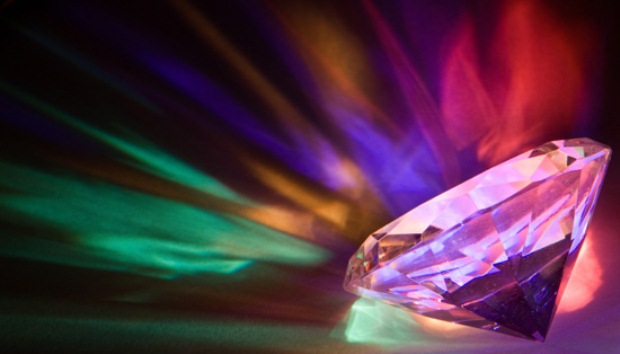
Favored by celebrities, colored diamonds are making a big splash in the fashion industry. Ranging from pale yellow to deep blue, these diamonds are a rare and costly find. All diamonds, including the colored variety, are formed the same way. Roughly 100 miles beneath the earth’s crust the pressure and heat are intense. When groups of carbon atoms are exposed to these conditions for long enough, a diamond is formed. The diamonds are then carried to the surface of the earth by volcanic eruptions.
Colored Diamonds
Colored diamonds form when a foreign material mingles with the carbon atoms that make up the stone. This can occur either during or after formation. Diamonds are graded according to their color. Ironically, slight coloring within a diamond will result in a lower grade unless the color is intense enough to be clearly apparent to the naked eye. When this occurs, the diamond can be marketed as a “fancy” diamond. Fancy diamonds are available in a variety of different shades including yellow, green, blue, and pink.
Yellow – Diamonds that have a yellow to brown hue are the result of nitrogen contamination during the stone‘s formation. Although all colored diamonds are rare, yellow diamonds are one of the most common varieties due to the fact that nitrogen is so abundant in the Earth’s atmosphere and beneath its surface.
Green – Green diamonds form as colorless diamonds. If, however, the rocks the stones are ultimately deposited in contain trace amounts of radiation, that radiation will eventually penetrate the stone. Over time, radiation can eat away at a diamond’s structure, causing microscopic holes. Electrons can then get trapped within these holes, giving the stone a green hue.
 Blue – Blue diamonds are by far the rarest find. A blue diamond forms when the element boron is introduced during formation. Scientists estimate that only one out of every 200,000 diamonds that are unearthed contain enough boron to be classified as a genuine blue diamond. The most famous blue diamond is the Hope diamond, housed at the Smithsonian Institute. Although the Hope diamond is a deep blue, this shade is extraordinarily rare. The vast majority of blue diamonds are a light blue and have a color similar to that of an aquamarine. Blue diamonds are so sought after that in May of 2008, Christie’s auctioned off a 13 carat blue diamond ring for over $8,500,000.
Blue – Blue diamonds are by far the rarest find. A blue diamond forms when the element boron is introduced during formation. Scientists estimate that only one out of every 200,000 diamonds that are unearthed contain enough boron to be classified as a genuine blue diamond. The most famous blue diamond is the Hope diamond, housed at the Smithsonian Institute. Although the Hope diamond is a deep blue, this shade is extraordinarily rare. The vast majority of blue diamonds are a light blue and have a color similar to that of an aquamarine. Blue diamonds are so sought after that in May of 2008, Christie’s auctioned off a 13 carat blue diamond ring for over $8,500,000.
Pink – Scientists know that pink diamonds, like green diamonds, are the result of trapped electrons within the stone. What they aren’t sure about, however, is how those trapped electrons got there. Jeffrey Post, a diamond expert and curator of the National Gem and Mineral Collection at the Smithsonian Institute, speculates that the stray electrons that result in a pink diamond could be introduced during the stone’s violent journey to the Earth’s surface.
Laboratory Production of Colored Diamonds
Because colored diamonds are so rare in nature, scientists are working to find a way to reproduce them under laboratory conditions. Diamonds can be lab-grown through the use of a machine that mimics the conditions beneath the surface of the earth or by introducing carbon atoms to different types of gases in a vacuum. Although both methods will produce lab-grown diamonds, neither method can reliably produce large stones.
In the future, scientists hope to be able to meet the public’s demand for colored diamonds by providing lab-grown substitutes. This will offset the cost of colored diamonds and make them available to a larger number of consumers. As it stands now, however, the cost of most colored diamonds puts them out of reach of the general public. If you want to own a colored diamond, expect to pay more than your home is worth for the privilege.
– Ciele Edward







